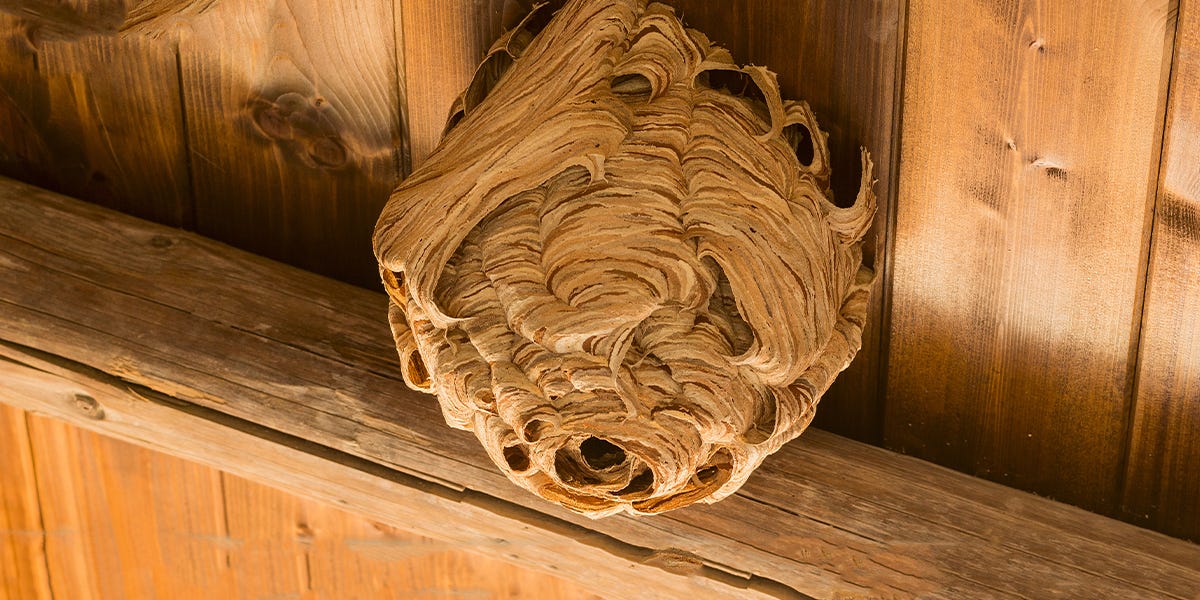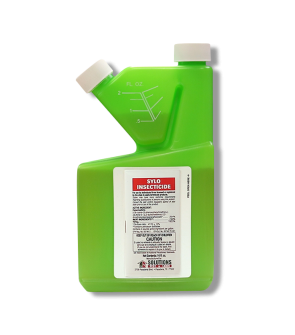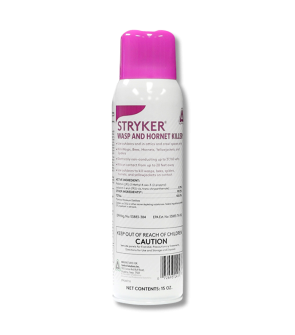Gain access to personalized product screening, the best pricing, rewards, and more!
Most Effective Products
How to Get Rid of Wasp and Hornet Nests Around Home
This article is a general DIY guide that discusses general control methods of wasps and hornet nests around your home. By reading our DIY guide, homeowners will learn how to prevent and get rid of wasp and hornet nests and pests by following the listed steps and professional products.
Seeing wasp or hornet nests around your house might make you uneasy, especially if you or any other family member is allergic to these stinging pests. They are unwelcome guests who consistently buzz around your pool, trash, and outdoor events. If agitated or threatened, they have been known to sting multiple times.
For these reasons, most homeowners are tempted to take the nest down with a broom or stick or water it down with a garden hose. While these quick fixes may sound fast and cheap, removing these pests' nests can threaten you or spread the infestation more.
Before you try to remove wasp or hornet nests on a ladder, consider following the pest control strategies listed in the associated links and using the products and tips suggested throughout this DIY guide.
What do Wasps and Hornet Nests Look Like

Before you remove a nest, you must identify the wasp or hornet species you are dealing with. The type of wasp and hornet it is will determine what products and control plan to follow. If you cannot see the pest, examine the nest characteristics and look for where the wasp or hornet builds their nest.
For a physical sample, refer to the image above. On the left is a paper wasp nest, and on the right is a hornet nest.
Paper wasps are the main types of wasps known to infest homes and yards. Their nests are made from plant materials, which gives them a paper-like appearance, hence the name. The coloration of these nests ranges from gray to brown. They consist of hexagonal cells that host eggs and larvae. The nests have an umbrella-like shape with no outer shell.
The location of these nests can be found hanging from tree and shrub branches, often close to water sources. If they enter your home, it will be in attics and areas with high ceilings. Around your home, the nests can be seen against window frames, door frames, chimneys, vents, fences, utility lines, and wall voids.
Hornets make a nest that has a paper-like appearance with a pale gray color and smooth outer layer. In the early stage of development, it will look like a small hanging object with a honeycomb structure. The nest will take on a football shape, with the opening at the bottom as it grows.
They make their nests high in sheltered locations such as trees, under eaves and roofing, telephone poles, against windows, and attics.
What To Do Before Taking Nest Down

Be sure to follow all instructions and safety precautions on the product label before using any pesticide material. You will also need to follow these other precautions before hornet and wasp nest removal:
- Wear Proper Personal Protective Equipment (PPE) or Professional Bee Suit: Make sure to wear a thick long-sleeve shirt and pants, safety glasses, a mask, coveralls, a mask, closed-toe shoes with socks, or for complete protection against stinging pests, a professional bee suit. Taking these steps can help prevent pest stings and chemical exposure.
- Create a Path of Escape: Whether or not your selected pesticide spray works on contact, it would be best to make sure you have a clear path of escape once applied. Move objects out of the way near the pest site to avoid tripping or delay in escape, but do not touch things infested with wasp or hornets.
- Inspect Product Label: Before treating any species of hornet or wasp nest, it would not hurt to double-check the label to make sure the product is labeled to treat the pest. If unsure of the pest infesting your property, look at our wasp guides for identification or the pest in a sealable plastic container at one of our store locations. This way, our team members can help identify and recommend appropriate products for pest removal.
- Be Calm: Wasps and hornets are usually not immediately aggressive unless you are in close proximity to their nests or they feel threatened. For this reason, it is best to remain calm and still and avoid making aggressive motions such as swinging your arm toward them.
Destroying a wasp or hornet nest may sound straightforward, but there are plenty of things homeowners do that should be avoided. The most common mistakes to avoid are listed below:
- Standing On A Ladder: Wasp or hornet nests in areas out of your reach should not be removed from a ladder, especially when the pest has not been eliminated. This is dangerous because if the pest is still active, you are more likely to be stung. It's best you wait until all signs of pest activity have ceased after applying the approved insecticide.
- Using Light Around Nest Site: When treating a wasp or hornet in the late afternoon or night, avoid using a flashlight. The constant motion of the light and the light itself will aggravate the pests, causing them to travel towards you. Instead, treat the pest in the late afternoon, just several hours before it becomes dark, or if you must treat it when it is dark, use a red-colored light.
- Swat at Pest: As mentioned previously, remain still and calm when in the presence of a wasp or hornet. If you swat at the pest with your arms or a shoe, it will become more aggressive and cause the rest of the colony to attack.
How to Remove Wasp and Hornet Nest
Once you have taken the necessary precautions and correctly identified the pest, you can kill the wasp or hornet and then remove its nest.
Step 1: Time Your Control and Locate the Nest

Never spray or remove a wasp or hornet nest during the day when they are most active. Remember where you found the nest and return to it in the evening or early morning since wasps and hornets congregate on or in the nest at night.
Step 2: Spray Pesticide Aerosol
Once you find the wasp or hornet nest, treat it with an insecticide aerosol that sprays from a safe distance of at least 20 ft. Stryker Wasp and Hornet Killer is a 0.1% prallethrin insecticide that delivers instant knockdown of wasps and hornets, paralyzing them and leading to death.
This wasp killer spray provides a jet stream application from a distance of 20 ft. to keep you safe from stinging pests.
When treating wasps and hornets, stand from a safe distance of 6-15 ft. from the nest, not directly underneath.
Hold the Stryker Wasp and Hornet Killer can upright, then aim the nozzle valve opening toward the nest with the wind at your back. Spray the nest until thoroughly wet and any hornets or wasps on or escaping the nest.
Step 3: Remove the Nest After 24 Hours
Wait until 24 hours after treating the nest with Stryker Wasp and Hornet Killer. Repeat until pest activity has stopped on and around the nest. Once wasps or hornets are no longer noticed and the appropriate time has passed, you can take the nest down.
Cover the wasp or hornet nest with a garbage bag, then detach it from the site. Seal the plastic garbage bag and place it in an outdoor trash can that is kept several feet away from your home's foundation.
Key Takeaways
What to Do After Taking Wasp and Hornet Nest Down?
- Once wasp and hornet nests have been eliminated, you can proceed with a preventative treatment of Sylo Insecticide. Determine how much Sylo Insecticide to use by measuring the square footage of the treatment site. To do this, measure the length and width in feet, then multiply (length X width = square footage). This product can be applied at a 0.1% emulsion, which breaks down to 0.5 fl. oz. of Sylo Insecticide per gallon of water per 1,000 sq. ft. To mix in a handheld pump sprayer, fill the tank with half the amount of water, add a measured amount of Sylo Insecticide, and then add the remaining half. Close the spray tank lid and shake until solution is evenly mixed. Apply the solution as a barrier treatment around your home by spraying 3 feet up the home's exterior foundation and 6 feet out on the ground. Be sure to spray eaves and entry points around your house, such as window and door frames, utility openings, weep holes, and other voids. Once applied, any wasp or hornets that contact treated areas will die within approximately 20 minutes for up to 90 days after application.
What Attracts Hornets and Wasps to Your Yard
- Wasps and hornets come to your home and yard when there is an abundance of pests, overgrown foliage, water bodies such as pools, and trash in open containers.
When to Spray Wasp and Hornet Nest
- Spray wasp and hornet nests with an insecticide aerosol that can spray from a distance of at least 20 ft. The best time to spray a wasp and hornet nest is in the evening or early morning since wasps and hornets congregate on or in the nest at night.









